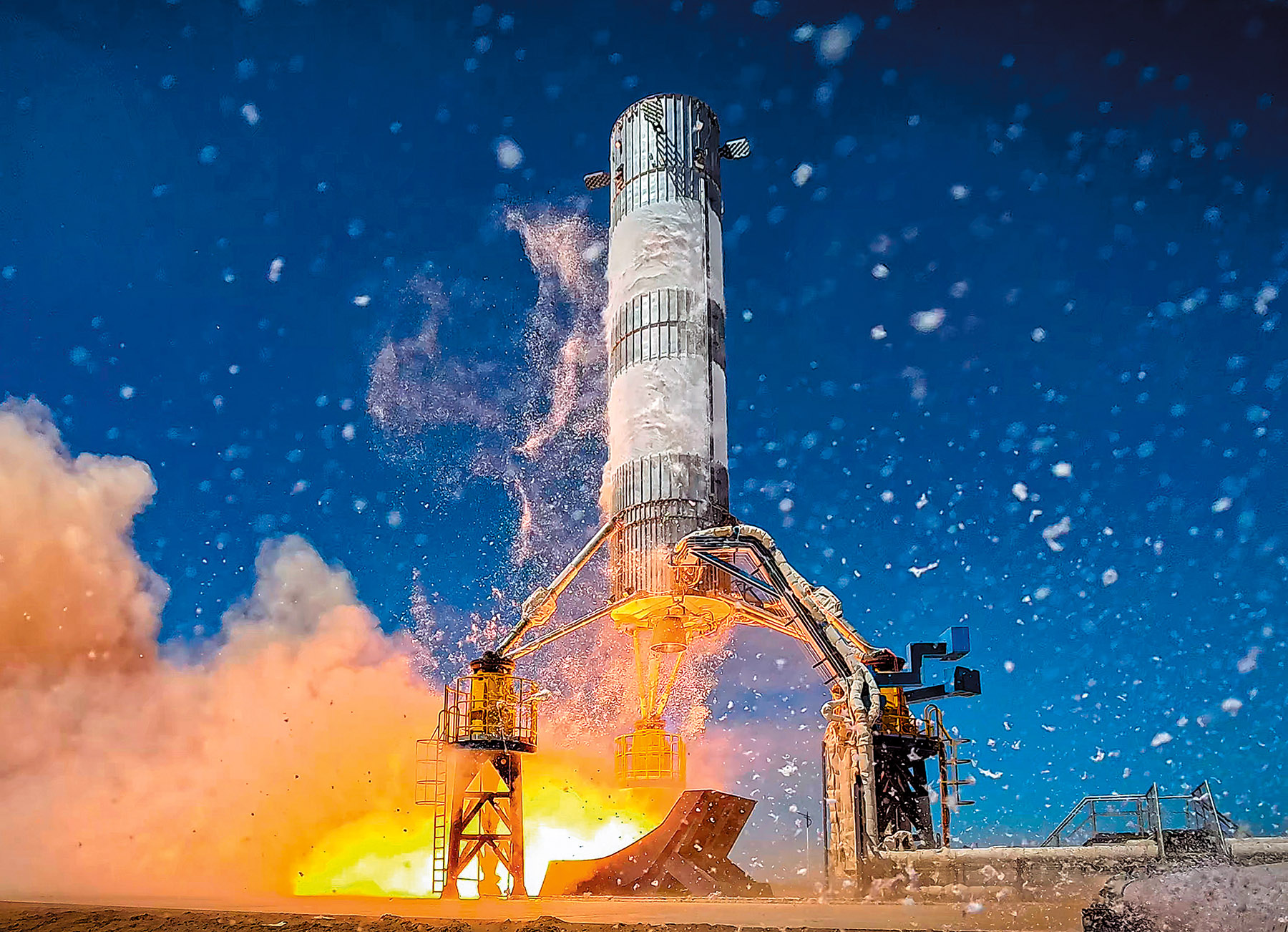
LandSpace, a leading private rocket maker in China, conducted a major technological demonstration on Wednesday, bringing the company closer to its goal of building a reusable carrier rocket.
An experimental rocket manufactured by the Beijing company was used in the "vertical takeoff and vertical landing" test — in which a rocket lifts off to a certain altitude and then makes a controlled vertical landing — at the Jiuquan Satellite Launch Center in northwestern China's Gobi Desert.
During the 200-second test, the experimental craft reached a height of 10 kilometers and then shut down its engine to start a computer-controlled descent.
READ MORE: Reusable carrier rocket passes the 'hop test'
At an altitude of 4.64 km, the rocket re-ignited its engine to reduce the descent speed and adjust its flight position.
The rocket, named VTVL-1, softly landed on a designated point about 3.2 km away from the launch site, boasting a very high landing accuracy, according to the company.
It was the second time the VTVL-1 performed such a demonstration, which is also known as a "hop test". During the first one, which took place in January at the Jiuquan center, the rocket reached a height of approximately 350 meters after flying for about one minute.
The VTVL-1 rocket is 18.3 meters tall with a diameter of 3.35 meters. It is made of stainless steel and has a liftoff weight of 68 metric tons. The landing gears are three buffer legs and four grid fins.
The engine used in the two tests was a modified TQ 12 methane engine that has a thrust of 80 tons.
Dai Zheng, head of rocket research and development at LandSpace, said the test marked the first time that any Chinese rocket has re-ignited an engine in a VTVL technology demonstration, adding that its success is a notable breakthrough in the nation's pursuit of reusable rockets.
"The experimental vehicle is tasked with verifying technologies and designs to be used on our ZQ 3 rocket model, which will be advanced and reusable. Performance of its components during the test is satisfactory, which means the craft is better than others of its kind in this country," he said.
ALSO READ: Rocket engine test facility being built in Guangzhou
Once its development is complete, the ZQ 3 will be 76.6 meters tall and 4.5 meters wide, and will weigh nearly 660 tons when fully fueled, Dai said.
With a liftoff thrust of nearly 900 tons, it will be able to transport spacecraft with a combined weight of 21.3 tons to a low-Earth orbit.
The model will be capable of performing at least 20 flights in its lifespan, he noted.
One of China's first private players in the space industry, Land-Space shot the world's first methane-propelled rocket into orbit last year, playing a leading role in the country's space sector.


